
The Archives has resources about the former municipalities that existed before the municipal amalgamation of 1998.
Even when it was a modest city of 9,000 and was known as “Muddy York,” Toronto was the commercial and financial hub of its large agricultural county. The history of the City of Toronto is the history of not only the city government but also of the people, organizations, and businesses that have shaped the city.
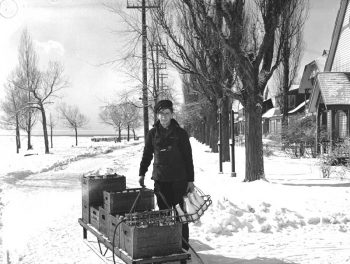
The Archives has the proceedings of City of Toronto Council from 1834 to 1997. They are available in the Research Hall Library.
You can search by-laws in the the City of Toronto’s online By-law Status Register.
Most by-laws are printed with the bound Council minutes. For help in finding by-laws, please consult Reference Desk staff.
Assessment rolls (property tax records) on microfilm from 1834 to 1996 are found in the self-serve cabinets in the Microfilm Room. For assessment rolls from 1997 onwards, the originals must be consulted. To find assessment rolls, search the Gencat database or consult Reference Desk staff.
The Archives has many other municipal records created by the former City of Toronto, including records on public health; public works, such as water filtration; transportation, such as roads and public transit; emergency services such as police and firefighters; social services; and many standing committees of Council, as well as special committees formed to investigate particular issues. It also has records from former municipalities that were annexed to Toronto, such as Parkdale, North Toronto, and Yorkville.
The records of the former Metro (regional) government and its agencies, boards, and commissions also include information about matters relevant to Toronto, including public works, such as water mains; transportation, such as roads and the TTC; planning; parks; and social services.
Published reports regarding Toronto involve a wide range of topics, such as public transit, social services, and Toronto neighbourhoods, as well as official plans. Search the Gencat database by topic.
The Archives has fire insurance maps on microfilm from a variety of years. The earliest is the Boulton Atlas of 1858. Most of the maps cover various years from 1880 to the 1920s, although there are a few covering mostly industrial and commercial areas of the city up to the 1940s. Not all areas of the city are covered for all years.
The Boulton Atlas of 1858 is available in hard copy in the Research Hall. Fire insurance maps from 1880 to 1924 are online. After 1924, they are available on microfilm in boxes titled “Goad’s” or “Underwriter’s”, plus the years, in the metal cabinets in the Microfilm Room.
The Archives has city directories for every year from 1834 to 2001, with a few exceptions. They are available on microfilm, found in the self-serve cabinets in the Microfilm Room.
To find maps showing Toronto, use the Gencat database. Reference Desk staff can show you how to use the database. The Archives also has several atlases that may be useful. Many maps are online. Some hard copies can be found on shelves at the back of the Research Hall. Maps of particular interest include the earliest map the archives has of Toronto, Bouchette’s 1792 Plan of Toronto Harbour (MT 171); Phillpotts’ Plan of York (1818, MT 109 and 172); Cane’s Topographical Map of the City and Liberties of Toronto (1842, MT 255); Bryce’s New Index Map of Toronto (1888, MT 243, 1-3); and several 19th-century “bird’s-eye” illustrated views (MT 278, 301, 797, and 1048).
The aerials cover the Toronto area from1947 to 1992. A selection of years is online. A smaller group of valley lands from 1937 to 1942 is also online.
These general reference books are available in the Archives Research Hall Library and are a good place to start your research:
Frederick H. Armstrong, Toronto, The Place of Meeting
(Burlington: Windsor Publications 1983)
971.3541 AR5 1983
Eric Arthur, Toronto, No Mean City
(Toronto: University of Toronto Press 1974 and 1986)
720.9713541 AR7 1974 or 1986
J.M.S. Careless, Toronto to 1918:An Illustrated History
(Toronto: J. Lorimer 1984)
971.3541 C18 1984
James Lemon, Toronto Since 1918: An Illustrated History
(Toronto: Lorimer and National Museum of Man 1985)
971.3541 L54 1985
Jesse Edgar Middleton, The Municipality of Toronto Canada:
A History (3 volumes) (Toronto and New York:
Dominion Publishing Company 1923)
971.3541 M58 1923
Books on more specific Toronto topics may be found by searching in the Gencat database. These topics include places (such as the Toronto Islands and Yonge Street), institutions (such as the TTC), people, and events.
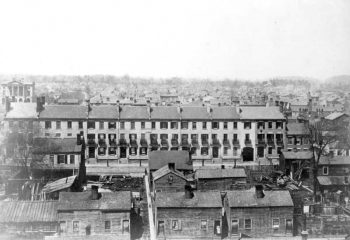
Major photographic collections include the Globe and Mail collection (Fonds 1266), which includes images of major national events (such as the Royal Visit of 1939 and World War II home front activities) as well as local highlights (such as the annual Santa Claus Parade and the Canadian National Exhibition) and fashion and entertainment coverage in the 1930s and 1940s.
The William James Family fonds (Fonds 1244) documents a wide range of Toronto locations, events, and people from the early 1900s to the 1940s, and the Department of Public Works collection (Series 372) shows the construction of water filtration plants, roads, bridges, and other major public works from the late 19th century to the 1940s.
The best way to find photographs is to use the Gencat database. Almost 90,000 images have been scanned and are viewable in the database. For help using the database please feel free to ask the Reference Desk staff.
There are also reference copies of some photographs in binders near the photographic finding aids; other photographs may be viewed on microfilm or microfiche found in the self-serve cabinets in the Microfilm Room.
For general information, see the information files with titles beginning with “Toronto.” You may find other information files about more specific topics, such as places (like Allen Gardens and Fort York), people (such as Mary Pickford and Ned Hanlan), events (such as Hurricane Hazel), and institutions. For a list of information file titles, please consult Reference Desk staff. For a list of Toronto mayors and other municipal information, please ask Reference Desk staff for the binder entitled “Toronto Reference Highlights.” To see whether a street name has changed, see the binders titled “Street Names” and “Name Present” on the shelves on the south side of the Research Hall.
Other holdings about the former City of Toronto include those created by individuals, businesses, and groups as diverse as the Children’s Aid Society (Fonds 1001), the House of Industry (Fonds 1035), residents’ and ratepayers’ associations, the Bureau of Municipal Research (Fonds 1003), and many former elected officials, including Allan Lamport, Nathan Phillips, Philip Givens, and John Sewell.
The regional government of the Municipality of Metropolitan Toronto (Metro) encompassed the geographical area we know today as simply Toronto. It coexisted with the area municipalities (thirteen in 1953, reduced to six in 1967) and was responsible for issues of regional significance and scope, such as water supply and sewage disposal, solid waste management, social services, police and ambulance services, arterial roads, and public transit.
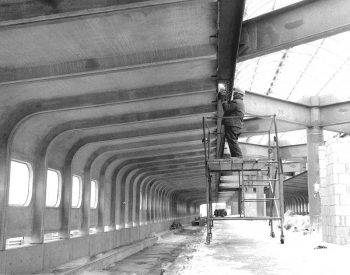
The Archives has the proceedings of Metro Council from 1953 to 1997. They are available in the Research Hall Library. Also available are videotapes of Council meetings from 1992 to 1997. To see these, please speak to Reference Desk staff.
The Archives has records from Metro‘s departments and many of its agencies, boards and commissions. To find these records, search on your research topic in the Gencat database, or speak to Reference Desk staff.
The Archives has fire insurance maps on microfilm from a variety of years. The earliest is the Boulton Atlas of 1858. Most of the maps cover various years from 1880 to the 1920s, although there are a few covering mostly industrial and commercial areas of the city up to the 1940s. Not all areas of the city are covered for all years.
The Boulton Atlas of 1858 is available in hard copy in the Research Hall. Fire insurance maps from 1880 to 1924 are online. After 1924, they are available on microfilm in the Research Hall.
To find maps showing Metro, use the Gencat database. Reference Desk staff can show you how to use the database. Of particular interest are the TTC Planning Maps (Series 260) and Maps and Plans of the Planning Department (Series 210), both of which include maps showing transit routes, roads, population, land use, and other information.
The Archives also has several atlases that may be useful. They are found on shelves at the back of the Research Hall.
The aerial photographs cover the Toronto area from 1947 to 1992. A selection of years are available online. A smaller group of photographs of valley lands from 1937 to 1942 are also available.
The Archives holds many published reports regarding Metro, including those on topics such as public transit, water treatment, the environment, social services, and policing, as well as official plans and two Royal Commissions on Metropolitan Toronto. Search the Gencat database for these titles or your topics. Of particularly wide scope are the Clerk’s Official Reports (Series 10), the Annual Reports of the Commissioner of Finance (Series 185) and, for public works subjects, the Works Library Reports (Series 235).
These general reference books are a good place to start your research:
Timothy J. Colton, Big Daddy: Frederick G. Gardiner
and the Building of Metropolitan Toronto
(Toronto: University of Toronto Press 1980) 351.713541 C72 1980
Gera Dillon and Michael McMahon, Metro Perspectives (videotape)
(Toronto: Metropolitan Toronto Archives 1991)
971.3541 D58 1991 (closed reference)
Don R. Richmond, History of Metropolitan Toronto
(draft) (Toronto 1978)
971.3541 R41 1978
Boomtown, Metropolitan Toronto: A Photographic Record of Two Decades of Growth
(Toronto: Donald Boyce Kirkup and Lockwood Survey Corp., Ltd. 1969)
917.13541 K63 1969
Metropolitan Toronto: The Changing Context, 1953-1993
(Toronto: Municipality of Metropolitan Toronto 1993)
351.713541 M56 1993
Metropolitan Toronto: Past and Present: Aerial Photos From the Collection of Gordon H. Jarrett
(Toronto: Donald Boyce Kirkup 1974)
917.1354 K63 1974
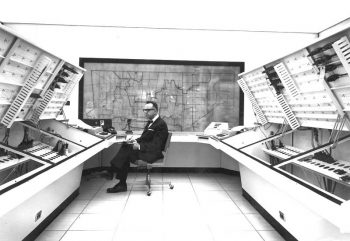
To find photographs of places and events throughout Metro, search on your research topic in the Gencat database. Particularly wide-ranging in subject matter is the Metropolitan Toronto Planning Board Brochure Photographs Series (Series 35), which includes images of police, parks, and cultural activities as well as the development of suburbs and infrastructure from 1948 to 1978.
Other large collections include the Road Construction Photographs (Series 3), showing roads and streetscapes throughout Metro from 1949 to the 1980s; the Works Library Photographs (Series 4), showing construction and maintenance of water, sewer, and solid waste management facilities from 1874 to 1986; and the Parks and Property Photographs (Series 316), showing parks and recreation facilities from 1924 to 1982.
For photographs of public transportation, see the Central Photography of the Toronto Transit Commission (Series 71), as well as the Strathy Smith Fonds (Fonds 1128, subway series), which shows construction of the Yonge Street subway, and the Eric Trussler Fonds (Fonds 1567), which shows construction of the University Avenue subway.
For general information, see the information files whose titles begin with “Metro” or “Metropolitan.” You may also find other information files about more specific topics, including people (such as Mel Lastman, Fred Gardiner, and Tommy Thompson), places and landmarks (such as the Gardiner Expressway and the Martin Goodman Trail), and issues of both local and regional significance (such as housing, water quality, economic development, and GO Transit). For a list of information file titles, please consult Reference Desk staff.
For a list of Metro politicians and other municipal information, please ask Reference Desk staff for the binder entitled “Metro Reference Highlights.” Other useful sources for general information are the Metro Planning Board Brochures, the Metro Key Facts, and the Metro Briefing Notes, all findable in the Gencat database.
As well as the photographic collections mentioned above, highlights include the Eli Comay Fonds (Fonds 39) of planning records; the papers and drawings of architect Howard Chapman (Fonds 7); correspondence, subject files, and publications of the Urban Alliance on Race Relations (Fonds 40); administrative and promotional records of the Toronto Area Industrial Development Board (Fonds 42); police records (Fonds 38 and 15); and the photographs, diaries, and other papers of conservationist Charles Sauriol (Fonds 4).
In the 19th century, the area that would eventually become the city of York was largely agricultural, with grist, lumber, and woollen mills dotting the banks of the Humber River. In the first half of the 20th century, it was a refuge for working-class families earning independence by building their own homes.
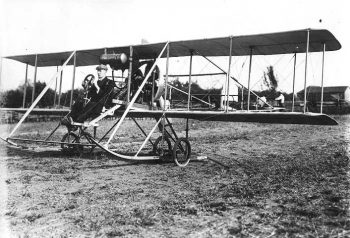
The City of Toronto Archives has records, created by municipal governments as well as private groups and individuals, about York, including personal papers; published books and reports; and visual material, including maps and photographs.
Early council proceedings from York County are found in Christine Mosser, ed., York, Upper Canada, Minutes of Town Meetings and Lists of Inhabitants, 1797-1823 (Toronto: Metropolitan Toronto Library Board 1984) in the Research Hall Library (call number 929.3513541 Y7 1984). Council proceedings for York from 1860 to 1997, and for Weston from 1882 to 1966, are also available. To find them, search for them in the Gencat database.
By-laws from 1850 to 1997 are also available; please consult Reference Desk staff.
The Archives has York assessment rolls from 1882 to 1992 and Weston assessment rolls from 1883 to 1966. To find assessment rolls, search the Gencat database or consult Reference Desk staff.
For York records, see Fonds 211, City of York fonds in the Gencat database.
The records of other municipal governments may also be of use. The records of the former Metro (regional) government ((Fonds 220) and its agencies, boards, and commissions also include information about matters relevant to York, including public works, such as water mains; transportation, such as roads and the TTC; planning; parks; and social services. To find these records, search on your research topic in the Gencat database, or speak to Reference Desk staff.
Also available now are records from municipalities that were originally part of York. As well as the former City of Toronto (Fonds 200), these consists of Brockton (Fonds 203), East Toronto (Fonds 204), Forest Hill (Fonds 207), North Toronto (Fonds 206), Parkdale (Fonds 202), Swansea (Fonds 208), West Toronto (Fonds 205), and Yorkville (Fonds 201).

Some areas of York are listed in the Toronto city directories in a separate suburban section (see each year’s table of contents for page numbers) from 1905 to 1929. Starting in 1930, York listings are part of the main directory.
Between 1983 and 1995, York listings appear only in the “central” and “west” editions of the directory, which are not published every year. After 1995, York listings appear in one volume along with parts of the City of Toronto.
Directories are available on microfilm, found in the self-serve cabinets in the Microfilm Room.
The Archives also has a copy of a Directory and Map of the Township of York (917.13540025 ON8 1909) for 1909, which includes listings for York villages. Ask Reference Desk staff to retrieve this directory for you from closed reference.
The Archives has fire insurance plans on microfilm for parts of York for 1948, 1957, 1962, and 1964. They are found in the metal cabinets in the Microfilm Room (boxes are titled “Goad’s” or “Underwriter’s”).
Each set of maps begins with a key map and an index of street names. You can use either to find your area. A key to the symbols used in the maps is found on the bulletin board in the Microfilm Room at the back of the Research Hall.
To find maps showing York, or use the Gencat database. Reference Desk staff can show you how to use the database. The Archives also has several atlases that may be useful. They are found in the section titled “Atlases” in the main area of the Research Hall.
The aerials cover the York area from 1947 to 1992. Each aerial shows a part of the city, not the entire city. A selection of years is online. A smaller group of valley lands from 1937 to 1942 is also online.
The Archives holds published reports regarding York, including those on topics such as public transit and roads, as well as official plans. Search the Gencat database for your topic.
To find photographs of York places and events, search on your research topic in the Gencat database.
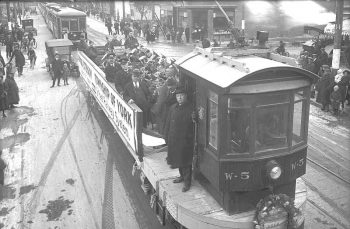
These general reference books on the history of York are a good place to start your research:
J.C. Boylen, York Township: An Historical Summary
(Toronto: Municipal Corporation of the Township of York and the Board of Education of the Township of York 1954)
971.354 B69 1954
Wilbert G.Thomas, The Legacy of York: A Survey of the Early Development of the Communities of York
(Toronto: Historical Committee of the City of York 1992)
971.354 T36 1992
Wilbert G.Thomas, The Legacy of York: A Survey of the Later Developments (1920-1950) in York Township
(Toronto: Historical Committee of the City of York 1992)
971.354 T36 1996
City of York: A Local History
(Toronto: Board of Education for the City of York 1987)
971.354 C39 1987
Some photographic highlights of York records currently available at the City of Toronto Archives include early airplane flights near Weston (Fonds 1244), the first TTC streetcar in York (Series 71), and views of Weston and York streetscapes in the 1920s (Series 71).
Highlights of other media include correspondence, plans, and notes regarding various properties in the Township of York from 1851 to 1900 (Fonds 79), including a brochure for “suburban gardens and villa residences” for sale on Balmoral Avenue, Weston (Series 346, File 105). Also of interest are the daily journals of William Abbott Parsons (1844-1923), who owned a farm near Eglinton Avenue and Dufferin Street (Fonds 85).
For general information, see the information files titled “York, Ont.-City 1983- ” and “York (Ont., Regional Municipality) includes York County 1792-1971.” You may also find other information files about more specific topics. For a list of information file titles, please consult Reference Desk staff. For a list of York mayors and other municipal information, please ask Reference Desk staff for the binder entitled “York Reference Highlights.”
East York has left its mark on the rest of Toronto through the red bricks supplied by the Don Valley Brick Works. In more recent times, the oases of its riverside parklands have been enjoyed by people from all over the city.
The City of Toronto Archives has records, created by municipal governments as well as private groups and individuals, about East York, including personal papers; published books and reports; and visual material, including maps and photographs.
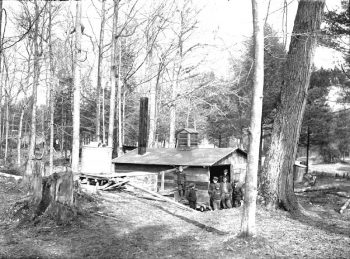
The Archives has Council proceedings and by-laws for East York from 1924 to 1997, and Leaside from 1913 to 1966.
For information about the area before the formation of East York, see Council proceedings for the Township of York Council starting in 1860.
To find Council proceedings, search the Gencat database.
The archives has assessment rolls for East York from 1924 to 1991 and for Leaside for 1939 and from 1942 to 1967 (after which it was amalgamated with East York).
For assessment information before the formation of East York, see the assessment rolls for the Township of York. They are currently available from 1882 to 1992.
To find assessment rolls, ask Research Hall staff for the guide to East York assessment rolls.
For East York records, see Fonds 209, Borough of East York fonds in the Gencat database. For Leaside records, see Fonds 210, Town of Leaside fonds, also in the database.
The records of other municipal governments may also be of use. The records of the former (regional) Metro and its agencies, boards, and commissions also include information about matters relevant to East York, including public works, such as water mains; transportation, such as roads and the TTC; planning; parks; and social services. To find these records, search on your research topic in the Gencat database, or speak to Reference Desk staff.

Some areas of East York are listed in the Toronto city directories in a separate suburban section (see each year’s table of contents for page numbers) from 1890 to 1929. Starting in 1930, East York listings are part of the main directory.
Between 1983 and 1995, East York listings appear only in the “central” and “east” editions of the directory, which are not published every year. After 1995, East York listings appear in one volume entitled “City of Toronto (east of Yonge) and East York.”
Directories are available on microfilm, found in the self-serve cabinets in the Microfilm Room.
The Archives also has a copy of a Directory and Map of the Township of York (917.13540025 ON8 1909) for 1909, which includes listings for East York villages. Ask Reference Desk staff to retrieve this directory for you from closed reference.
A small part of western East York appears on fire insurance maps starting in 1890. A larger area appears in the 1910 revised volumes. These maps are available online.
Larger areas can be found in the volumes for 1944, 1950, and 1956. They are found in boxes titled “Goad’s” or “Underwriters'” in the metal cabinets in the Microfilm Room.
Each set of maps begins with a key map and an index of street names. You can use either to find your area.
To find maps showing East York, use the Gencat database. Reference Desk staff can show you how to use the database. The Archives also has several atlases that may be useful. They are found at the back of the Research Hall.
The aerial photographs cover the East York area from 1947 to 1992. A selection of years is online. A smaller group of valley lands from 1937 to 1942 is also online.
The Archives holds published reports regarding East York, including those on topics such as public transit and roads. To find them, search the Gencat database on your topic. Of particular interest is the Brief of Reeve True Davidson, East York Township, to the Royal Commission on Metropolitan Government (1964).
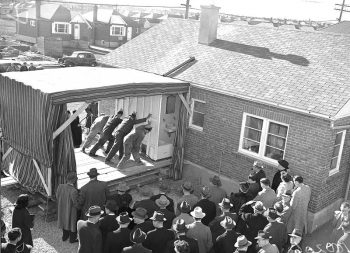
These general reference books are available in the Archives Research Hall Library and are a good place to start your research:
Ron Brown, Toronto’s Lost Villages
(Toronto: Polar Bear Press 1997)
971.3541 B81 1997
Eleanor Darke, A Mill Should Be Built Thereon:
An Early History of the Todmorden Mills
(Toronto: Natural History/Natural Heritage 1995) 971.3541 D24 1995
True Davidson, et al., Golden Years of East York
(East York: Centennial College Press 1976)
971.3541 D28 1976
Jane Pitfield, ed., Leaside
(Toronto: Natural Heritage Books 2000)
971.3541 L48 1999
J.I Rempel, The Town of Leaside:
A Brief History (Toronto: East York Historical Society 1982)
971.3541 R25 1982
Books on more specific East York topics may be found by searching in the Gencat database. These topics might include landmarks (such as Todmorden Mills) and people (such as Charles Sauriol and True Davidson).
To find photographs of East York places and events, search on your research topic in the Gencat database.
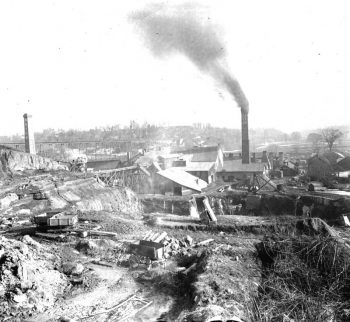
For general information, see the information file titled “East York.” You may also find other information files about more specific topics, such as smaller communities within East York (such as Leaside), and landmarks (such as the Don Valley, the Don Valley Brick Works, and Todmorden Mills). For a list of information file titles, please consult Reference Desk staff. For a list of East York mayors and other municipal information, please ask Reference Desk staff for the binder entitled “East York Reference Highlights.” For information regarding origins of street names and street name changes, see the back of the binder titled “Street Names M-Z” in the Research Hall.
North York has a long history as first an agricultural region dotted with crossroads villages, then a growing suburban community, and finally a modern city. The City of Toronto Archives has many records, created by the government as well as private groups and individuals, about North York.
These records include municipal government information such as Council minutes and departmental files; personal papers; published books and reports; and visual material, including maps and photographs.
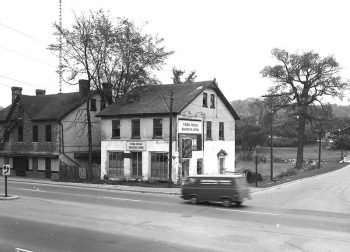
The Archives has the North York Council minutes and by-laws from 1923 to 1994, and Committee reports for various years. For a detailed list of committees and their reports, please ask at the Reference Desk. These minutes and reports are stored in the Records Centre. Please ask the Reference Desk staff to order the volumes you wish to see from the Records Centre. North York by-laws are computerized and can be searched by keyword. Please see the Reference Desk staff if you wish to have a search performed.
For information about the area before the formation of North York, see Council proceedings for the Township of York starting in 1860. To find them, search the Gencat database.
The archives has North York assessment rolls from 1922 to 1992. For assessment information before the formation of North York, see the assessment rolls for the Township of York from 1882 to 1992. To find assessment rolls, ask Reference Desk staff for the guide to North York assessment rolls.
Many records created by North York are available through the Gencat database.
The records of the former Metro (regional) government and its agencies, boards, and commissions also include information about matters relevant to North York, including public works, such as water mains; transportation, such as roads and the TTC; planning; parks; and social services. To find these records, search on your research topic in the Gencat database, or speak to Reference Desk staff.
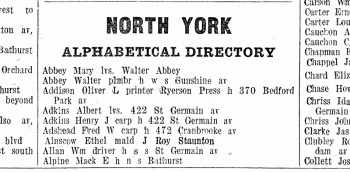
North York is listed in the Toronto city directories in a separate suburban section (see each year’s table of contents for page numbers) from 1924 to 1929. Starting in 1930, North York listings are part of the main directory. After 1983, the directories are published in separate “central,” “east,” and “west” volumes, though not every volume is published in every year. North York listings appear in all three of these volumes, depending on location.
Directories before 1960 are available on microfilm, found in the self-serve cabinets in the Microfilm Room.
The Archives also has a copy of a Directory and Map of the Township of York (917.13540025 ON8 1909) for 1909, which includes listings for North York villages. Ask Reference Desk staff to retrieve this directory for you from closed reference.
The Archives has fire insurance plans on microfilm for parts of North York for 1952, 1959, 1961, and 1964. They are found in the microfilm (boxes are titled “Goad’s” or “Underwriters'”) in the metal cabinets in the Microfilm Room at the back of the Research Hall.
Each set of maps begins with a key map and an index of street names. You can use either to find your area. A key to the symbols used in the maps is found on the bulletin board in the Microfilm Room at the back of the Research Hall.
To find maps showing North York, use the Gencat database. Reference Desk staff can show you how to use the database. The Archives also has several atlases that may be useful. They are found on shelves at the back of the Research Hall.
The aerial photographs cover the North York area from 1947 to 1992. A selection of years is online. A smaller group of valley lands from 1937 to 1942 is also online.
The Archives holds published reports regarding North York, including those on topics such as public transit, roads, and construction of the North York Civic Centre. Search the Gencat database for your topic.
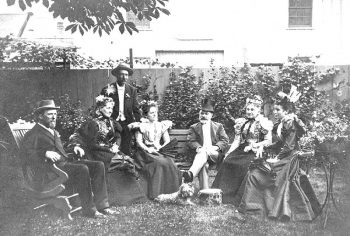
These general reference books on the history of North York are available in the Archives Research Hall Library and are a good place to start your research:
Patricia W. Hart, Pioneering in North York
Toronto: General Publishing 1968
971.3541 H25 1968
Borough of North York: Historical Outline of the Administration of the Borough of North York Including Historic Sites
North York: Public Information Office of the Borough of North York
1978 or 1983 971.3541 H62 1978 or 1983
Ron Brown, Toronto’s Lost Villages
Toronto: Polar Bear Press 1997
971.3541 B81 1997
Books on more specific North York topics may be found by searching in the Gencat database. These topics might include smaller communities within North York (such as Downsview or Oriole), church histories (such as St. John’s at York Mills), and organizations (such as North York Hydro).
To find photographs of North York places and events, search on your research topic in the Gencat database, or browse the Gencat listing for Series 249.
For general information, see the information file titled “North York.” You may also find other information files about more specific topics, such as smaller communities within North York (such as York Mills or Don Mills), specific buildings (such as Dempsey Store or Gibson House), parks (such as Edwards Gardens), and other landmarks or events.
Another useful source for North York history is the Baldwin Collection of Canadiana Marilyn & Charles Baillie Special Collections Centre on the 5th floor of the Toronto Reference Library.
Scarborough made its name known in the 1950s, with its famous “Golden Mile” of industry (Eglinton Avenue East) and new suburban communities, but its history as an agricultural region dotted with crossroads villages and mills goes back a century and half before that.
The City of Toronto Archives has records, created by municipal governments as well as private groups and individuals, about Scarborough, including personal papers; published books and reports; and visual material, including maps and photographs.
The Archives has Scarborough Council proceedings from 1850 to 1995, and by-laws from 1850 to 1997. To find them, search the online database.
The Archives has assessment rolls for Scarborough from 1853 to 1991. Ask Reference Desk staff for the guides to these assessment rolls.
To see municipal government records created by Scarborough, search the Gencat database.
The records of the former Metro (regional) government and its agencies, boards, and commissions also include information about matters relevant to Scarborough, including public works, such as water mains; transportation, such as roads and the TTC; planning; parks; and social services. To find these records, search on your research topic in the Gencat database, or speak to Reference Desk staff.
The Archives has city directories for every year from 1834 to 2001, with a few exceptions. They are available on microfilm.
Parts of Scarborough (often written as “Scarboro”) are listed in the Toronto city directories in a separate suburban section (see each year’s table of contents for page numbers) from 1917 to 1929. Starting in 1930, Scarborough listings are part of the main directory. Between 1983 and 1995, Scarborough listings appear only in the “east” edition of the directory, which is not published every year. After 1995, Scarborough listings appear in one separate volume.
The Archives has fire insurance plans on microfilm for parts of Scarborough for 1950, 1956, 1959, and 1969. They are found in the microfilm (boxes are titled “Goad’s” or “Underwriters'”) in the metal cabinets in the Microfilm Room.
Each set of maps begins with a key map and an index of street names. You can use either to find your area. A key to the symbols used in the maps is found on the bulletin board in the Microfilm Room at the back of the Research Hall.
To find maps showing Scarborough, use the Gencat database. Reference Desk staff can show you how to use the database. The Archives also has several atlases that may be useful. They are found on the shelves at the back of the Research Hall.
The aerial photographs cover the Scarborough area from 1947 to 1992. A selection of years is online. A smaller group of valley lands from 1937 to 1942 is also online.
The Archives holds published reports regarding Scarborough, including those on topics such as public transit and roads, as well as official plans. To find them, search the Gencat database for your topic.
These general reference books on the history of Scarborough are available in the Archives Research Hall Library and are a good place to start your research:
Robert A Bonis, ed., History of Scarborough
(Scarborough: Scarborough Public Library 1965 or 1968)
971.3541 B64 1965 or 1968
Ron Brown, Toronto’s Lost Villages
(Toronto: Polar Bear Press 1997)
971.3541 B81 1997
Barbara Myrvold, The People of Scarborough: A History
(Don Mills: City of Scarborough Public Library Board 1997)
971.3541 M99 1997
Scarborough Historical Notes and Comments
(Scarborough: Scarborough Historical Society)
971.354 SC7 1988
To find photographs of North York places and events, search on your research topic in the online database. These series are a good place to start:
For general information, see the information file titled “Scarborough.”
For a list of Scarborough mayors and other municipal information, please ask Reference Desk staff for the binder entitled “Scarborough Reference Highlights.”
Etobicoke has included a number of different landscapes and communities: prosperous farms, resorts clustered on the lakeshore, mill villages on the Humber, a commercial byway along Lakeshore Road (later Boulevard).
The City of Toronto Archives has many records, created by municipal governments as well as private groups and individuals, about Etobicoke, including government reports; personal papers; books; and visual material, including maps and photographs.
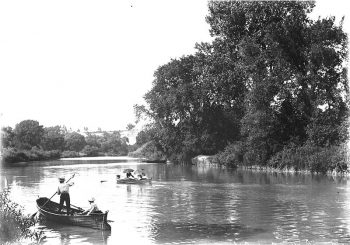
The Archives has Council proceedings and by-laws for Etobicoke, Long Branch, Mimico, and New Toronto. To find them, search the Gencat database. Subject indices for by-laws are available in green binders on shelves on the south wall of the Research Hall.
The Archives has assessment rolls for Etobicoke, Long Branch, Mimico, and New Toronto. Ask Reference Desk staff for the guides to these assessment rolls.
To see municipal government records created by the City of Etobicoke (Fonds 213), Town of Mimico (Fonds 214), Village of Long Branch (Fonds 216), and the Town of New Toronto (Fonds 215), search the Gencat database.
The records of the former Metro (regional) government and its agencies, boards, and commissions also include information about matters relevant to Etobicoke, including public works, such as water mains; transportation, such as roads and the TTC; planning; parks; and social services. To find these records, search on your research topic in the Gencat database, or speak to Reference Desk staff.
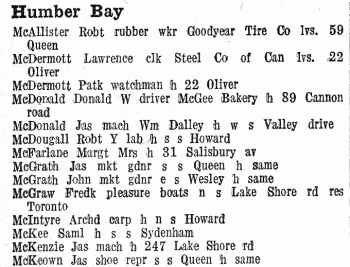
Parts of Etobicoke are listed in the Toronto city directories in a separate suburban section (see each year’s table of contents for page numbers) from 1890 to 1929. Starting in 1930, Etobicoke listings are part of the main directory. Between 1983 and 1995, Etobicoke listings appear only in the “west” edition of the directory, which is not published every year. After 1995, Etobicoke listings appear in one separate volume. Directories are available on microfilm, found in the self-serve cabinets in the Microfilm Room.
The Archives has fire insurance plans on microfilm for parts of Etobicoke for 1944, 1953, 1954, 1962, and 1973. There are also fire insurance maps for Lambton Mills in 1910, and Mimico and New Toronto in 1913. They are found in the microfilm (boxes are titled “Goad’s” or “Underwriters'”) in the metal cabinets in the Microfilm Room.
Each set of maps begins with a key map and an index of street names. You can use either to find your area. A key to the symbols used in the maps is found on the bulletin board in the Microfilm Room at the back of the Research Hall.
To find maps showing Etobicoke, use the Gencat database. Reference Desk staff can show you how to use the database. The Archives also has several atlases that may be useful. They are found on the shelves at the back of the Research Hall.
The aerial photographs cover the Etobicoke area from 1947 to 1992. A selection of years is online. A smaller group of valley lands from 1937 to 1942 is also online.
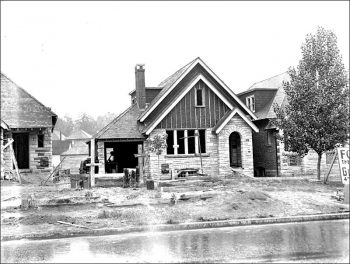
The Archives holds published reports regarding Etobicoke, including those on topics such as the lakeshore “motel strip,” the Islington community, Woodbine Centre, and the Humber River watershed, as well as official plans. To find them, search the Gencat database for your topic.
These general reference books are available in the Archives Research Hall Library and are a good place to start your research:
Ron Brown, Toronto’s Lost Villages
(Toronto: Polar Bear Press 1997)
971.3541 B81 1997
Robert A. Given, The Story of Etobicoke
(Etobicoke: Municipality of Etobicoke 1950)
971.354 G43 1950
Esther Heyes, Etobicoke: From Furrow to Borough
(Etobicoke: The Borough of Etobicoke 1974)
971.3541 H51 1974
K.M. Lizars, The Valley of the Humber, 1615-1913
(Toronto: William Briggs 1913)
971.354 L76 1913
Villages of Etobicoke
(Weston: Argyle Printing 1985)
961.3541 V71 1985
Books on more specific Etobicoke topics may be found by searching in the Gencat database. These topics might include places, organizations, landmarks, and events.
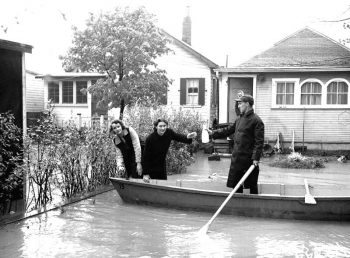
To find photographs of Etobicoke places and events, search on your research topic in the Gencat database.
For general information, see the information file titled “Etobicoke.” You may also find other information files about more specific topics, such as smaller communities within Etobicoke (such as Mimico and the Kingsway), landmarks (such as Montgomery’s Inn), people, and events. For a list of information file titles, please consult Reference Desk staff.
The green binder “Etobicoke Street Name Changes” will help you determine if a street name has changed.
For a list of Etobicoke mayors and other municipal information, please ask Reference Desk staff for the binder entitled “Etobicoke Reference Highlights.”
Series 497, Etobicoke Clerk’s Dept. archival photographs, is an excellent source for photographs of Etobicoke. Photographic highlights of other series include construction of the Humber Sewage Treatment Plant (Series 160 and 163). Other highlights include a film of Queen Elizabeth II and the Duke of Edinburgh visiting Etobicoke in 1959 (Series 230, Item 17), as well as photographs of the Humber Valley surveys of 1912 (Series 23) and records of the homeowners’ group The Thorncrest Homes Association Inc. (Fonds 55)